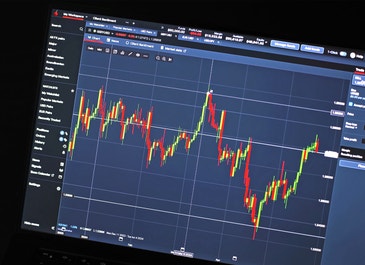How the Forex Market Operates and What Traders Should Know
The Forex market, referred to as Forex or FX, is a dynamic atmosphere where currencies are exchanged globally. To flourish in that fast-paced industry, traders must understand how to acknowledge developments and use successful strategies. Consistency in Forex trading is not pretty much making frequent profits but also about managing risk and changing to changing market conditions.

Understanding Forex Tendencies
A pattern in the Forex market identifies the common way where a currency couple is moving around a certain period. Trends can be upward (bullish), downward (bearish), or sideways (ranging). Recognizing these developments is essential for creating knowledgeable trading decisions.
Uptrends occur when prices regularly make larger levels and larger lows. Downtrends are recognized by lower highs and decrease lows. In a sideways industry, price moves within a selection without a clear direction, and this frequently happens during periods of industry uncertainty.
Traders use trendlines, moving averages, and complex indicators to greatly help recognize and ensure trends. Knowledge the energy and way of a tendency allows traders to align their strategies with the market's momentum.
Key Forex Trading Techniques
A few trading methods can support traders achieve regular benefits in the Forex market. The effectiveness of every technique is dependent upon the trader's experience, time responsibility, and chance tolerance.
Trend-following technique
This method requires entering trades in the way of the prevailing trend. Traders applying this technique often count on resources like going averages, MACD, and ADX to confirm development strength. The idea is to experience the development for provided that it stays whole, exiting when signals of reversal appear.
Breakout strategy
Breakout trading targets entering a position when the cost breaks out of a defined range or pattern. Traders look for essential support and opposition levels and position trades when price activity breaches these levels with strong volume. This technique is effective in markets planning for a significant move.
Selection trading strategy
In this approach, traders make the most of value moving between recognized help and opposition levels. It's most effective in sideways areas wherever there is no obvious trend. Oscillators like RSI or Stochastic indicators are usually used to recognize overbought or oversold problems within the range.
Scalping technique
Scalping requires creating numerous little trades through the duration of the time to make the most of tiny cost movements. This strategy needs fast decision-making, large attention, and low purchase costs. Scalping can work for experienced traders with access to rapidly execution platforms.
Risk Administration for Uniformity
No strategy can guarantee profits without proper risk management. Traders must determine their risk threshold and set stop-loss and take-profit levels for each trade. A typical principle is not to chance significantly more than one to two percent of trading money about the same position.

Maintaining a trading journal assists track efficiency, recognize habits, and produce necessary adjustments to strategies. Psychological get a handle on and discipline are equally crucial in avoiding impulsive decisions that can result in losses.
Comments
Post a Comment